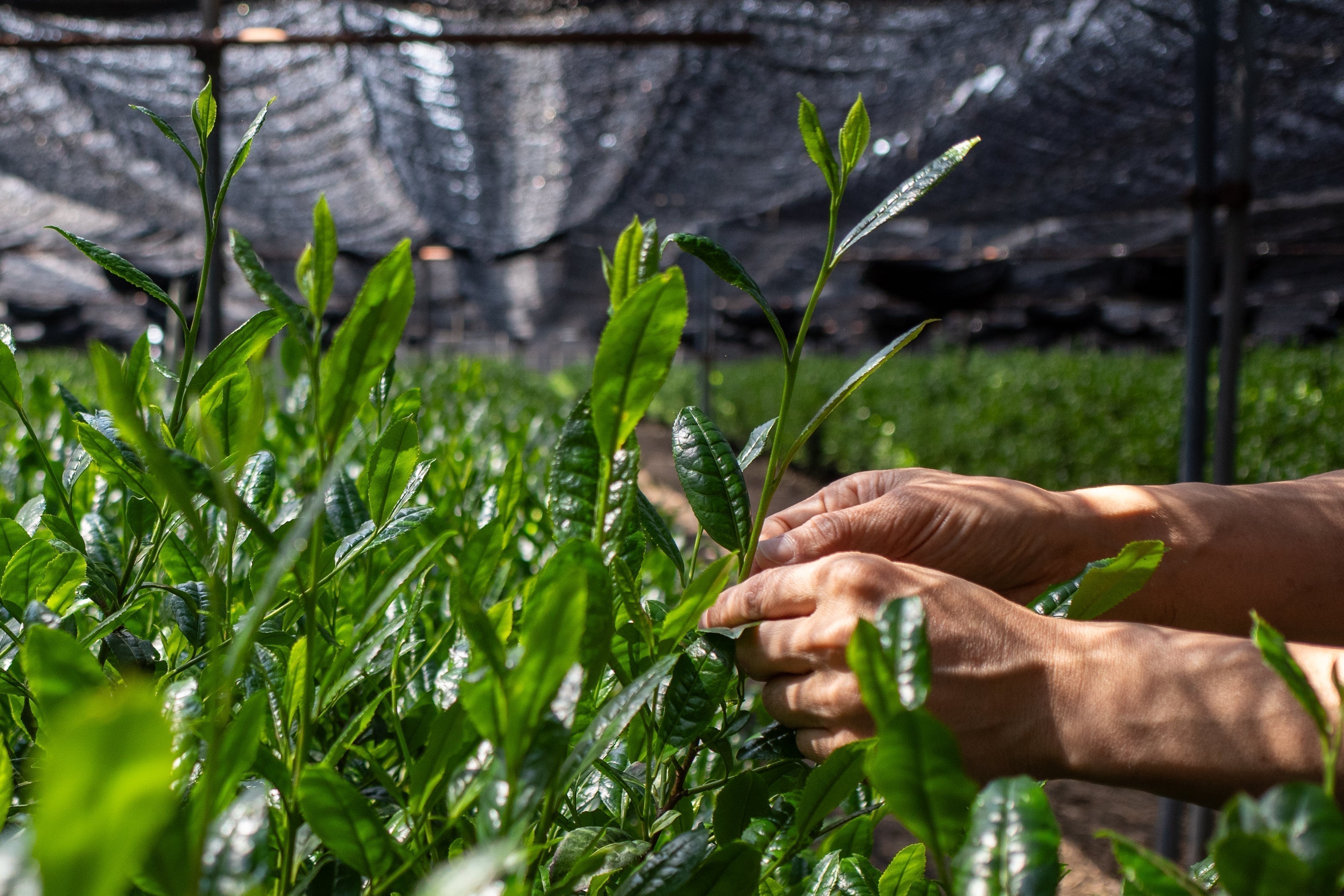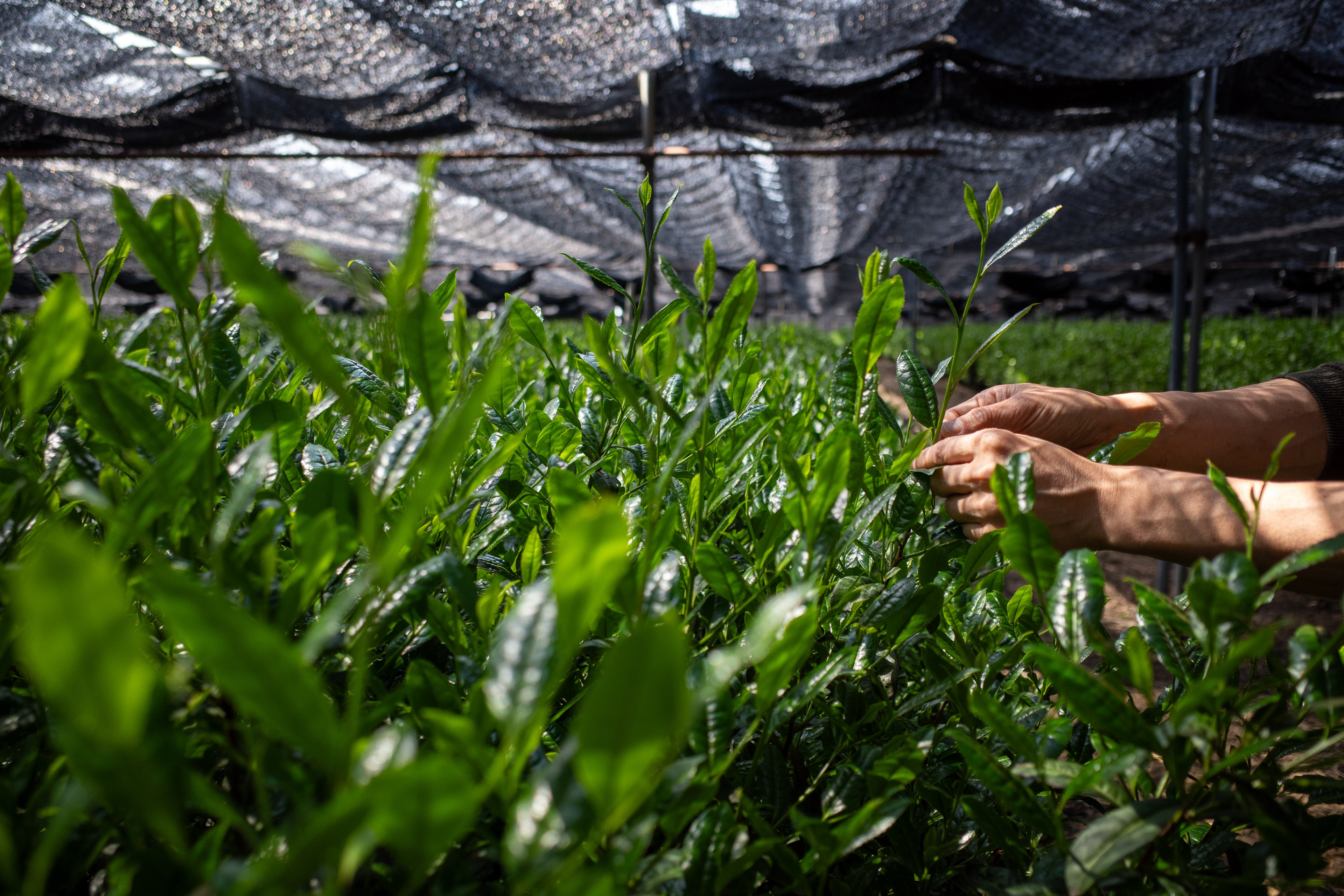Written by a mindfulness tea teacher, Miki Sensei.
When offering matcha to international guests, I am often asked:
"What exactly is matcha? What kind of tea is it? What makes it special?"
And to be honest, I believe even many Japanese people may find it challenging to answer accurately.
So let's take a closer look at this tea by considering two essential aspects:
① As a type of tea
② As a cultural and historical tradition
Definition of "matcha" as a type of tea
The word matcha is written in Japanese as 抹茶, where 抹 (matsu) means "to grind" and 茶 (cha) means "tea."
But that does not mean matcha is simply a green tea (sencha) ground up using a stone mill.
Especially outside Japan, many products labeled as "matcha" are actually powdered sencha or granular green tea produced during the sencha manufacturing process. The color, aroma, and taste of these imitations are, of course, very different. So I sincerely hope you'll enjoy the authentic matcha here at chacha maimai.

According to the Nihon Chagyo Chuokai (Japan Tea Central Association), matcha is defined as "shade-grown tea leaves (tencha) dried without rolling, then manufactured into fine powder ground using a stone mill." However, due to the current widespread confusion and inconsistent global distribution, even the ISO (International Organization for Standardization) is now working on establishing a worldwide definition.
Two key characteristics that distinguish tencha (and therefore matcha) are shade-grown cultivation and the absence of a rolling process.
Let's walk through how tencha, and eventually matcha, is made—and what it actually is.
All from the same tea plant
Matcha, sencha, black tea, Chinese teas—all come from the same plant: Camellia sinensis (chanoki), a perennial evergreen tree of the camellia (tsubaki) family. There is the Chinese variety, characterized by smaller leaves and better cold resistance, which is primarily used for green tea, and the Assam variety, featuring larger leaves and weaker cold resistance, which is mainly used for black tea. In Japan, the Chinese variety is most commonly cultivated—and used to make matcha.
Where does it grow best?
 The ideal conditions for cultivating tea include:
The ideal conditions for cultivating tea include:
- Soil with good drainage, air circulation, and moisture retention
- Low soil viscosity (volcanic ash soil is ideal)
- Slightly acidic soil (pH 4–5)
- Warm, humid climate with daily temperature variation (average 14–16°C annually, no lower than -5°C in winter or above 40°C in summer)
For these reasons, Shizuoka, where Mt. Fuji is located, Kagoshima with the Sakurajima Volcano, and Uji in Kyoto, rich in layers of fallen leaves that create fertile soil, are Japan's famous tea-growing regions.
How is tea cultivated?
Today, tea trees are not usually grown from seeds, but from cuttings, for two main reasons. For one, chanoki rarely self-pollinates. To preserve the same variety, it must be propagated by cuttings. And the second reason is to maintain quality. Cross-pollination with other varieties results in hybrids with inconsistent qualities.
By using cuttings, growers can ensure the same high-quality tea over generations.
A newly planted cutting takes about 4 years before it can be harvested. However, it takes around 10 years to produce stable yields. Tea plants are typically replaced after 30–40 years, when they begin to show signs of aging and decline.

A Year at a Tea Farm
*The specifics of the process (length of shading, steaming, etc) will vary by each tea farm
1. Preparing the Tea Fields (Before winter)
The rows of tea bushes are trimmed into gentle, dome-like shapes to make next year's harvest easier.
↓
2. Frost Protection (March)
As buds begin to sprout, frost becomes the enemy. Wind fans or netting are used to prevent frost damage.
↓
3. ★ Shade-Grown Cultivation (April–May)
About 2–3 weeks* before harvest, the entire tea field is covered with yoshizu screens or fabric to block sunlight. The shading enhances the aroma (ooika), deepens the vibrant green color, and concentrates the umami (l-theanine) in the young buds.
↓
4. Hand-Picking New Buds (May–June)
The timing and time of day for picking have a significant effect on the taste and quality of matcha.
In Japan, 88 days after the beginning of spring (known as risshun) is known as the ideal time for picking first-flush tea (shincha). The first harvest is even celebrated in traditional children's songs. Tea picked during the 20 days following this date is considered the most delicious, and is used for koicha (thick tea), the highlight of a tea ceremony.
↓
5. Steaming
Immediately after picking, the leaves are steamed for 10–20 seconds to halt enzyme activity and prevent oxidation. A short steaming time helps retain the vivid green color and bring out the aroma (ooika).
↓
★ No Rolling
In teas like sencha (green tea), rolling helps to release flavor when brewed. However, matcha is consumed as a whole with hot water, so this step is not necessary. This makes matcha uniquely rich in nutrients and taste, delivering the whole essence of the leaf.
↓
6. Cooling
The steamed leaves are cooled by repeatedly being blown upward and dropped from a height of 5 to 6 meters. This helps remove moisture and prevent clumping.
↓
7. Drying
Using a dryer furnace, moisture is gradually removed to bring out the aroma and concentrate the umami.
↓
8. Sorting
The dried leaves are cut, and the stems and leaf veins are removed. Then everything is sifted to eliminate impurities.
↓
9. Shaping for Milling
Unwanted stems and leaves are removed to maintain quality, and the leaves are cut into small 5mm pieces to make stone milling easier. They are then slowly dried at low temperatures.
↓
10. Final Drying
Each leaf part is dried at a suitable temperature to reach the optimal moisture level for storage (ara-tencha, or crude tencha).
↓
11. Ripening & Finishing
The ara-tencha is aged for a set period, further sorted, and lightly roasted (shiage-tencha, or finished tencha).
↓
12. Stone Milling into Matcha
In a temperature and humidity-controlled room, the shiage-tencha is slowly ground using stone mills that rotate at a constant speed.
One mill produces approximately 40–50g per hour.

The friction during milling enhances the aroma and flavor, while the naturally uneven particles give matcha its signature mouthfeel.
・・・・・・・・・・
Thank you for reading this far.
What do you think?
Has your relationship with matcha changed?
I find myself sitting up straight, humbled and full of gratitude.
Matcha is truly a miracle, a gift made possible by nature's blessings and the wisdom and craft passed down through generations of artisans.
It makes you want to savor every scoop, every bowl, with care and appreciation, today and every day forward. May it nourish and purify every corner of your body and spirit.
In the next post, we will explore the second vital aspect of matcha: its rich cultural and historical journey.
Written by:
 |
Miki Fujisaki hibana to bloom founder, mindfulness tea facilitator/coach Website: https://www.hibana-to-bloom.com/ Instagram: @hibanatobloom |
Miki was born in Osaka and began her journey in Urasenke Chado while working as a Japan Airlines cabin attendant. During her time in London, she planned and managed Japanese cafes ("Matcha" and "Cha no Ma"), and after her return to Japan, she oversaw international project planning.
To deepen her understanding of spaces and relationships where individuals coexist, illuminate, and nurture, Miki studied coaching and facilitation. Currently, she holds tea gatherings and coaching sessions for individuals and companies in tea rooms, offices, online, and overseas. Her work is centered around the theme of interbeing, cultivating a sense of interconnectedness, mindfulness, and “here-and-now.”

